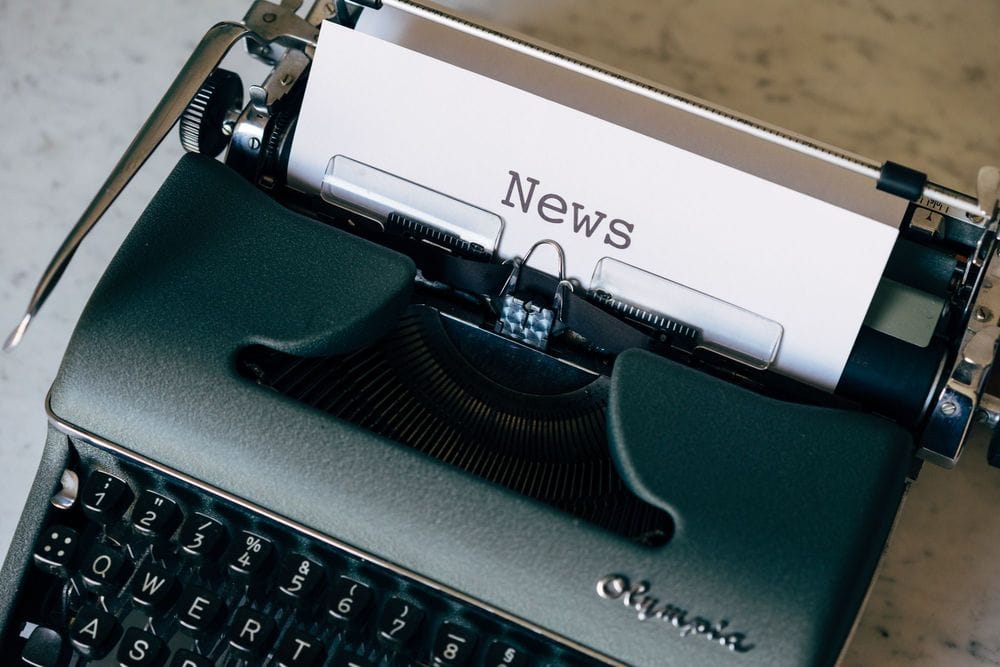A media mention can be like the holy grail for businesses, websites, and even individuals. It’s often overlooked the level of reach and power media companies have, but when you get that sweet coverage, the surge of views, visitors, and exposure can be like a new lifeline (or in some unfortunate instances, quite the opposite).
But how exactly do you get that attention? One way is through an effective press release email pitch.
In this article, we’ll explore what you need to know about
- Contacting journalists
- Writing a powerful press release email pitch
+Plus a sample template at the end you can steal for your PR outreach today!
What Is a Press Release?
A press release (PR) is a short news story related to your brand that is sent to journalists and editors of specific publications with the goal of getting them to produce a story on the subject.
An ideal press release should include everything a journalist would need to know such as major facts, and answers to the who, what, where, and why they should cover your story.
Newsworthy Events

There are plenty of newsworthy events that are worth pitching to media professionals and is where a PR pitch comes in. Examples of such events are:
- Launching a new product or service.
- Hosting a local event such as a competition.
- Partnering with a celebrity or major organization.
- Highlighting a customer success story.
Several factors are considered when journalists decide if a story is newsworthy or not, such as:
- Does it have an emotional element or relate to a certain audience like a local community?
- Is it timely, unique, or set a precedent?
- Can it be connected to other current events, trends, or a bigger story?
Answering the above can help gauge your story’s newsworthiness and its chances of getting covered by your target publications.
Contacting the Right Journalists and Editors
Crafting an effective press release pitch starts with finding the right targets, which can be challenging. Simply filling out a generic contact form normally won’t cut it.
There are many strategies when it comes to finding the right person. Journalists that often cover news in your industry may have contact details in their bylines. In case they don’t, you can check:
- Their contact information on LinkedIn or Facebook.
- Search them up on Twitter.
- Use email-finding tools.
Even simpler, you can ask them directly through social media (most often Twitter) if you can connect over email. This way you establish an initial connection and they’ll remember you when they see your email pitch.
How to Write a Great Press Release Email Pitch
The elements of a great press release email pitch overlap with common practices in cold outreach such as in guest post pitches but with more substance and detail.
Editors and journalists receive hundreds of emails, but the following framework will help make yours stand out among the rest.

Keep Subject Lines Short and Simple
A short subject line achieves two main goals:
- In general, short subject lines perform better than long ones.
- It’s possible your contact is among the 50% of people who use mobile phones to check their email.
So exactly how short should it be? Subject lines begin to cut off on most mobile devices after around 50–60 characters, but the sweet spot lies between 40–45.
Add a Personal Touch
Personalization like mentioning a contact’s name or common interest can go a long way. Simply adding a contact’s name in the subject line can increase open rates by 26%.
Personalization can be a challenge with thousands of emails (many with registered nicknames) but in the case of targeting journalists and editors, your list will likely be a lot smaller and the names registered will be more authentic and easily automated into your emails.
Give the Highlights of Your Story
Showing the best parts of your story will make your pitch stand out and grab your contact’s attention. You’re letting them know upfront what they’lll be working with if your pitch gets accepted.
Examples of what to highlight are:
- The main result or takeaway from your story.
- Anyone notable that was involved.
- How it affects an industry, target group, or society.
Your contact will then have the chance to evaluate whether your story is the right fit for their publication.
Make Things Easy
Making your email easy for journalists means saving them as many steps as possible to move forward with your PR. That means including all the details they’ll need in the process before they need to ask for them.
Here’s a simple outline of what to include:
- Make it clear what makes it interesting: this can be a highlight like we mentioned above.
- What makes it current: mention what makes your story timely and relevant to illustrate a timeline for publication. A journalist knows publishing a story much later won’t make it as newsworthy.
- Who you are: a brief introduction of your company, who you are, and your position will show your level of involvement and why you’re reaching out.
- Include contact details: have your contact details in your signature and if suitable, mention other methods of contact such as through phone or social media.
- Share resources: a press kit or creatives can save a lot of time for journalists who would otherwise have to source images or ask for them.
A Free Template to Use Today
Now let’s see a PR email pitch in action. This template’s scenario is about a product launch that solves a problem your target journalist often writes about. The personalization shows how the journalist has been researched for this pitch.
Subject line: A solution to {{problem}}
Hey {{prospect’s name}},
Your latest article on {{topic}} shed a lot of light on {{article focus}}. I couldn’t agree more that {{article highlights}} are a major concern.
We’re planning to launch a new product next month that will help solve this problem and would be glad to get your thoughts on it.
You can check out the details here. {{make ‘here’ a hyperlink instead of a full link.}}
{{Main highlight of your story}}. Would you be interested in publishing a story on the results?
Looking forward to your feedback. If you have questions, I’m the head of Product Design at {{Company}}. You can call me at {{phone number}} or contact me by email at {{email}}.
Best,
{{Signature}}
Key Takeaways
A great press release pitch shares the same fundamental elements of cold outreach but with more detailed steps. Compiling a targeted list of journalists and publications relevant to your story will help keep your click-through rate high and make personalization easier. Remember when writing a PR pitch:
- If possible, research your contact beforehand to add personal elements like a compliment or congratulations in your pitch.
- Include what you can to make the process easier for journalists.
- Share the best part of your story to highlight its potential.
Need more free email templates? Check out our full list here.





